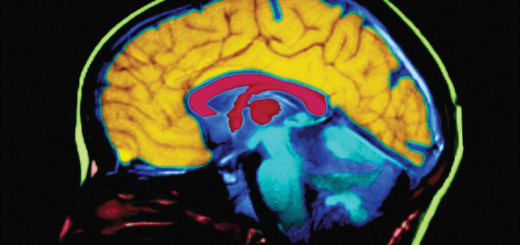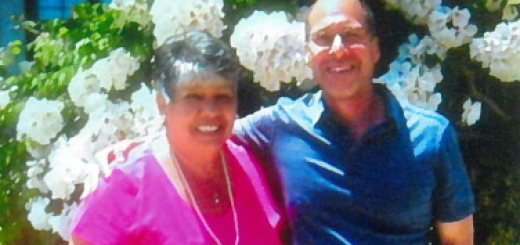Finding connection and purpose after an Alzheimer’s diagnosis
Guest blog by Sheri Katz
When Wally from Lakeport was first diagnosed with Alzheimer’s disease 2014, he was devastated. He felt like he had done something wrong. It took him years to understand that having Alzheimer’s disease is not the end of his life, but just another phase. Wally uses his newfound strength to remind others about the importance of making an impact with the time you have left.
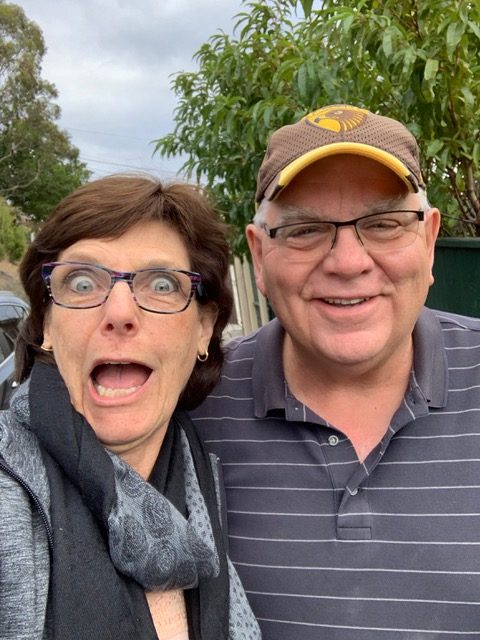
Short term memory loss
Wally had been an insurance agent for 40 years and had met many people. “If you walked in and introduced yourself to me, I knew who you were,” said Wally. “It came to a point where I couldn’t retain names and I’d have to write them down. Then I began to forget where I wrote them.”
In 2013 Wally was working with a customer and could not remember his name, despite being told numerous times. This customer was angry at having to repeat himself and called Wally “stupid.” It was at this moment that Wally knew something was wrong.
Visiting the doctor
After the incident at work, Wally went to his doctor. The doctor originally diagnosed Wally with Mild Cognitive Impairment (MCI) but within the year, the diagnosis was changed to early onset Alzheimer’s disease. The doctor suggested that he cut down on stress. At the time, Wally was also a member of the local school board. In addition to his job, this was one of his big stressors, which he let go of reluctantly.
“The local paper wanted the inside scoop on why I quit,” said Wally. “I told them I left for personal reasons. I was ashamed to tell anyone I had Alzheimer’s. Later, I’d regret missing such a great opportunity to talk about the disease.”
Sinking into depression
Wally began to think of all the ways a dementia diagnosis was going to negatively impact his life. “I was looking behind me,” shared Wally. “
I used to be able to do all of these things I love like art, music and camping. I thought that I wouldn’t be able to do them in the future. It made me want to pull a blanket over my head.”
Soon, Wally began to fall into a depression. “I was building a wall,” shared Wally. “I was hiding from my friends because I felt ashamed of the disease. I was distancing myself from my wife to protect her.”
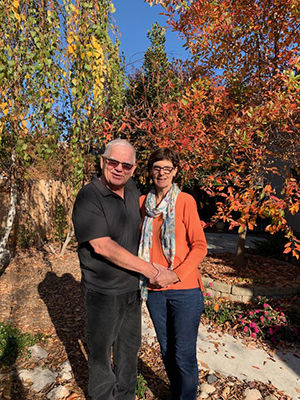
Finding support
Wally’s wife Pat helped him find the Alzheimer’s Association®. “She drove me kicking and screaming to my first support group meeting,” said Wally. “I thought the group was going to be a joke.
“When I got there, I realized that no one there looked like they had dementia. Everyone there had been successful businesspeople, just like me.”
Wally continued to attend the support group. He discovered he had things in common with other group participants and formed strong relationships with them. “No one going through this asks for it,” said Wally “Your fears are not unique. Your problems are not unique. You find out it’s not just you and you are not alone.”
Developing a positive attitude
Thanks to his time spent in the support group, a year or so after his diagnosis Wally was ready to face Alzheimer’s disease head on. Wally said, “What I learned in talking to people about the diagnosis is that I need to live. I want to live. This is just another phase of life and we all go through different phases.”
While Wally admits that having Alzheimer’s disease can be difficult, it has also given him a few blessings:
- It forced him, as a self-proclaimed workaholic, to quit his job so he can spend more time with his family and friends
- It forced him to rely on the kindness of strangers, specifically when he was out in public and needed assistance
- It made him more honest and open about what he’s going through so he can better help others.
Advice for others
Wally wants others who are living with Alzheimer’s or other dementias to know that they still matter. They are important. He wants to make sure they know that they didn’t do anything wrong, they just got sick. They’re not alone and a support group can truly turn one’s life around.
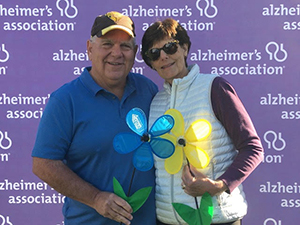
Participating in a Walk
Because of Wally’s experiences, he encourages others to support the Alzheimer’s Association. The Association outreach and education programs help others learn about the disease. As someone who lives in a small, rural community, Wally wants to see even more resources available in his local community.
One way you can support the Alzheimer’s Association is by participating in Walk to End Alzheimer’s®. Wally and Pat have participated in the Sonoma-Marin Walk to End Alzheimer’s for the past two years. The first year Wally was asked to speak at both the Sonoma-Marin and the Napa Valley Walks. His favorite part of the Walk is the kinship he feels with others.
Last year, he and his wife Pat put together a team, mostly made up of family members, to walk together. Wally said, “The outpouring of support was impactful.”
This year Walk to End Alzheimer’s is different. We won’t be coming together in one big group. Instead people will walk, following CDC guidelines, with their close friends and family in their local neighborhoods. Wally and Pat are looking forward to bringing Walk to their hometown. They will be walking through their neighborhood carrying their flags and wearing purple.
Pat and Wally encourage you to join the Walk team, Patt’s Posse, or form your own team and join us for the Sonoma-Marin Walk on October 10. In 2020 Walk is everywhere – on every sidewalk, track and trail. Not near Sonoma or Marin Counties? Register today at alz.org/walk to find out more about being a part of Walk in your community.
Learn more:






